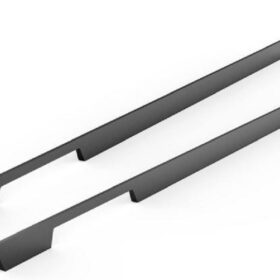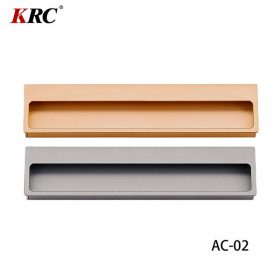How to Choose the Best Aluminium Alloy Handles for Your Applications
Aluminium alloy handles are a popular choice for many applications due to their strength, durability, and corrosion resistance. However, with so many different aluminium alloys available, it can be difficult to know which one is right for your specific application. This article will provide you with the information you need to choose the best aluminium alloy handles for your needs.
Key Considerations
When choosing aluminium alloy handles, there are several key factors to consider, including:
Strength: Aluminium alloys vary in strength, so it is important to choose an alloy that is strong enough for your intended application.
Weight: Aluminium alloys are lightweight, but some alloys are lighter than others. If weight is a concern, you will want to choose a lightweight alloy.
Corrosion resistance: Aluminium alloys are generally corrosion-resistant, but some alloys are more resistant than others. If your handles will be exposed to harsh conditions, you will want to choose an alloy with good corrosion resistance.
Cost: Aluminium alloys vary in cost, so it is important to choose an alloy that is within your budget.
Choosing the Right Alloy
Once you have considered the key factors, you can start to narrow down your choices. Here is a brief overview of some of the most common aluminium alloys used for handles:
6061: 6061 is a versatile alloy that offers a good balance of strength, weight, and corrosion resistance. It is a good choice for general-purpose applications.
6082: 6082 is a strong alloy that is also lightweight and corrosion-resistant. It is a good choice for applications where strength is a priority.
5052: 5052 is a corrosion-resistant alloy that is also lightweight and strong. It is a good choice for applications where corrosion resistance is a priority.
2024: 2024 is a high-strength alloy that is also lightweight and corrosion-resistant. It is a good choice for applications where strength and weight are both important factors.
Testing and Evaluation
Once you have chosen an aluminium alloy, it is important to test it to ensure that it meets your requirements. This can be done by performing a variety of tests, such as:
Tensile strength test: This test measures the amount of force required to pull the handle apart.
Yield strength test: This test measures the amount of force required to deform the handle.
Elongation test: This test measures the amount that the handle stretches before it breaks.
Corrosion resistance test: This test measures the amount of corrosion that the handle develops when exposed to harsh conditions.
By performing these tests, you can ensure that the aluminium alloy handles you choose are up to the task.
Conclusion
Choosing the right aluminium alloy handles for your application is essential for ensuring that they perform as expected. By considering the key factors and following the steps outlined in this article, you can choose the handles that are right for your needs.
-
2024-09-14Exploring the Different Types of Modern Closet Door Pulls and Their Applications
-
2024-09-14How Cabinet Door Pull Handles Support High-Traffic Areas
-
2024-09-06Cost-Benefit Analysis of Investing in High-Quality Long Wardrobe Door Handles
-
2024-09-04How Flat Cabinet Handles Enhance Modern Interior Design
-
2024-11-29Top Trends in Modern Kitchen Cabinet Pulls for 2024
-
2024-11-28The Ultimate Guide to Modern Kitchen Cabinet Pulls- Materials, Styles, and Tips
-
2024-11-27Elevate Your Kitchen Design with These Must-Have Modern Cabinet Pulls
-
2024-11-26Sleek and Stylish- The Best Modern Kitchen Cabinet Pulls for a Contemporary Look






